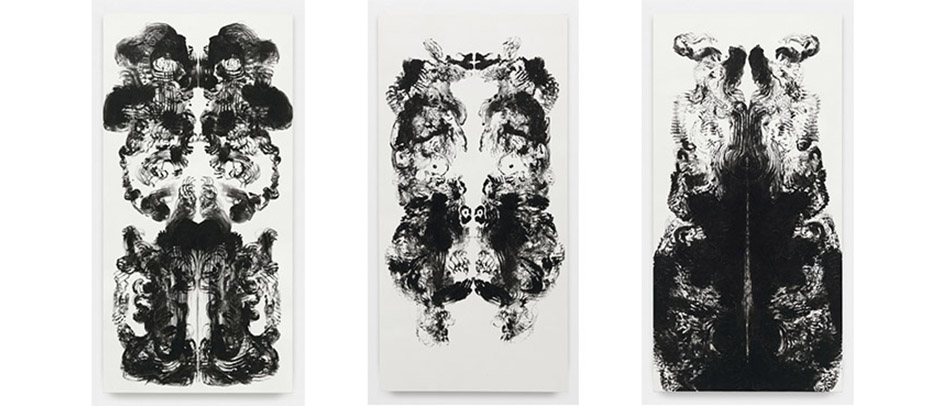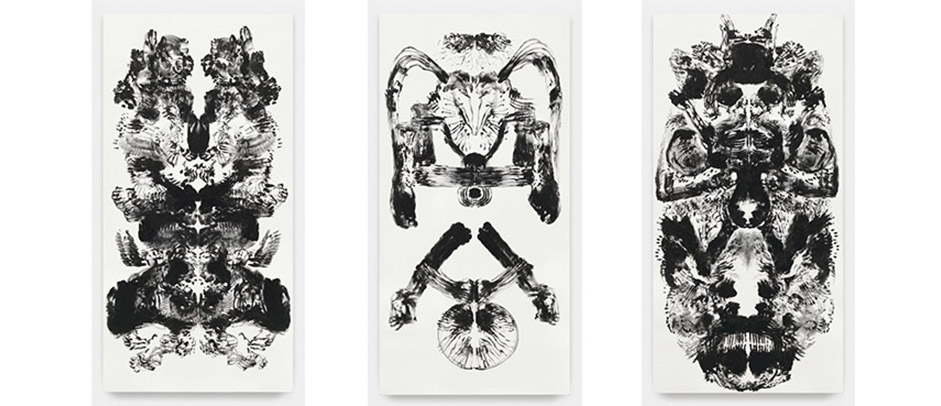
Mark Wallinger is one of the original YBA artists. A group of young British artists supported by Charles Saatchi who came to dominate the British art scene in the 1990s. The poster boy for the movement is Damian Hirst and they transitioned to popular culture through the seminal exhibition Sensation at the Tate.
Wallinger has won the Turner prize, represented Britain at the Venice Biennale and his sculpture of a be-thorned Jesus Christ, Ecce Homo, was selected as the first sculpture for the much-loved Fourth Plinth in Trafalgar Square.
The artist has been playing with the idea of the self-portrait for some time. In 2007 he began a series of self-portraits that took as their subject matter the painted letter ‘I’. In this ongoing body of work Wallinger amused himself by toying with the vanity at the heart of the self portrait. He painted the letter with great formality on canvas, a medium with a rich heritage of self-promotion and propaganda.
By painting the letter instead of his own form Wallinger reduces his individuality to something as mundane and over used as the personal pronoun. He highlights how prosaic are our concerns and how pedestrian we human beings are, a timely reminder in this era of social media and common self-aggrandizement.
Mark Wallinger’s new body of work, now showing at Hauser and Wirth in London, takes this idea of the self-portrait yet further. Based on the Rorschach test images, Wallinger displays a fantastic skill with paint in these works that represent the Freudian tripartite concept of the Self as Id: instinct, Ego: mediator and Super Ego: moralizer.
Inspired by the wild and instinctive nature of the Id, Wallinger applies the paint free hand using symmetrical gestures to ape the Rorschach imagery. The paintings are composed according to his arm-span and by doubling his height, in essence they are a physical imprint of the artist himself.
Once again Wallinger succeeds by inspiring the viewer to consider himself and his image. The intricate lattices of the artist’s instinctive gestures provide a lexicon of imagery for reflection and self-analysis. Yet despite the cerebral nature of the works, the monumental images have a sublime quality. The symmetry and apparent simplicity of the monochromatic paintings create an aura of tranquility in the gallery space, providing a haven from the bustle of Regent Street a few meters away.
